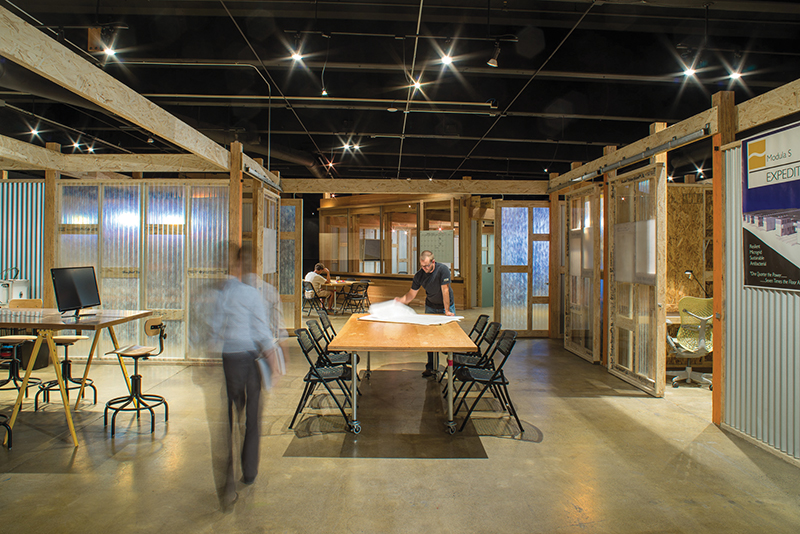Skier days, enplanements at Friedman Memorial Airport, Mountain Rides bus ridership and Local Option Taxes are commonly referenced economic indicators for the Wood River Valley. A quick glance shows that numbers are up across the board and predictions are for continued growth even in the short term. Two new hotels, the Limelight (nearly complete) and the Auberge (under construction) will accommodate tourism’s growth, which Harry Griffith, a longtime student of the local economy and executive director of Sun Valley Economic Development, calls the staple two-thirds of the economy.
“Roughly two-thirds of sales ($800 million) and wages ($600 million) are tourism related,” Griffith said, sharing his estimates based on numbers reported to government agencies that he crunches into what he calls the county’s proxy GDP ($1.8 billion, although the number hasn’t yet been updated for 2015). “That tourism and recreation makeup two-thirds of the economy is unlikely to change.”
There are very interesting economic drivers when looking into the weeds, however. Take, for instance, the fact that there are about 140 nonprofits in the Valley that employ higher-wage people who bring their families to the valley. Many of the organizations like the Animal Shelter of the Wood River Valley are in a growth phase and will provide still more jobs.
“Those individual families are delivering hundreds of thousands of dollars a year,” Griffith said, adding that the money largely goes to recreation and tourism, the staples of the mountain lifestyle, including sports equipment, guide services, arts and entertainment, bodywork, medical care and fitness training. “It’s all of the above.”
A recent economic forum indicated that some 700 new jobs are on the horizon. Housing crunch is back in the news and property values continue creeping up since the Great Recession. Although it still lags behind the so-called depressed $10.6 billion taxable property valuation of 2010 when the assessed value of all private property in Blaine County had suffered a $2 billion slash after the 2008 high of $12.4 billion, the abstract net taxable value for 2016, with most of the numbers in, is looking at $9.2 billion, up about 5 percent from 2015.
That’s the short story.
There is a generation of folks who only know the Sun Valley of the Snowball Express, a fitting scene for a romantic snow globe, when adventurous souls from Los Angeles could safely ride Averell Harriman’s Union Pacific train directly to the slopes and learn to ski with great skiing personalities like the late Stein Eriksen. Some trained home after learning skiing’s basics to look back at Sun Valley only with nostalgia. Yet, nostalgia, a yearning for great memories and traditions, is an incalculable economic driver, especially by those who have returned again and again to Idaho’s most famous resort area to stake a claim to the truly dynamic gathering place, a home for invention and creative pathways to living life more fully.
A dentist started a goggle company (Smith Sport Optics), and an engineer moved the skiing industry away from bamboo ski poles toward an aluminum version (Scott Sports). Recreation equipment retailers Smith and Scott seemed like they’d be here forever. Many thought even the military contractor ESS would be a long term staple with its ballistic-grade lenses. But the global economy wooed away all those mainstays.

Inside the recently remodeled Ketchum Innovation Center where young companies share workspaces, as well as expertise. Photo by Kevin Syms.
“The macro figures are trending upward, but you’re not going to keep a company from selling,” said John Duval, head of the Ketchum Innovation Center (KIC). KIC recently took over the old Ketchum Post Office building and is quickly filling up with talent, including Solu Publishing Inc., an interactive digital story-making enterprise that incorporated in March 2015. Solu is led by David Currier, who succeed in navigating changing waters with the departure of his longtime employer, Smith, and thereby keeps his own Sun Valley story alive, all with the cooperation of smart, successful board members and a small crew of employees and programming colleagues in India.
Duval dedicates his time to helping the latest entrepreneurs tap into the vast business brain trust and investment power of Sun Valley. Another example is the Sawtooth Brewery, which made a successful pitch to angel investors to become a regional brewer and beer distributor. The company is now an economic driver even during the slack seasons.
“We are surrounded by creative energy here,” Duval offered. “Who knows what the next industry is that successful entrepreneurs will happen to be in. We want to give those companies a chance of succeeding. We are not trying to take over tourism, but we’re becoming so susceptible to external forces. There’s nothing anyone can do to predict a better snow year or the impact of wildfires. The goal is to diversify. We want to support a more diversified pool of companies. The only way to become sustainable is to diversify investment and spread out the risk.”
With a sufficient employee pool and support, technology companies will likely nest in the beautiful confines of the area since business transacted via the World Wide Web is geographically independent. New names like Vyykn (water) and Solu seek to fill the employment gaps left behind, and they stand to reap newly codified tax benefits as they grow. Duval says he fields regular calls from people considering moving their businesses to Blaine County and he’s excited to see what sticks.
In the backdrop, Sun Valley has indelible traditions that define its character and keep the ball rolling Griffith said. “Businesses will come and go in the other third of the economy, but the basic structure is likely to remain the same.”
There are older celebrations like Wagon Days with its lore of mining lodes and more recent additions like Crosstoberfest, the autumn ode to cyclo-cross racing and craft beer that add to the mix. It is conceivable that Ernest Hemingway back from the grave would be a fan of the off road carnival since he too enjoyed ruddy sport and the revelry gleaned of libations amongst friends and new acquaintances. Arguably, it would all be part of an artful discussion of the state of the world.
Now, in an election year and after the Chicago Cubs finally bested opponents for a World Series victory, a new tipping point is here. And with that, the Sun Valley economy begs review by any who have been touched by its graces: career employees of Sun Valley Company, Blaine County or the U.S. Forest Service, the annual jet-set Allen and Company, medical or legal conference goers, recreation regulars from Boise, Seattle or Pocatello, the blue highway traveler stumbling into Ketchum for the first time after dark and even the third and fourth generation visitors, whose families have been enjoying the nature-based amenities of the area since the founding of the resort.
Since the Great Recession the community has inched its way back from the brink like any community, but at no time in the last eight years have things been static. Jack Sibbach at Sun Valley Resort is often asked to be an economic weatherman and shares as much as he can since his employer is a private company. Many still marvel at how summer visitor numbers often surpass winter highs. At its peak around Christmastime, the Sun Valley Resort employs about 1,800 people, with an average for the balance of the winter of 1,650 workers, Sibbach said. Those numbers have stayed largely constant, even through the economic downturn. The company continues to add and update facilities and is today more linked to the community through the transportation infrastructure. It employs Mountain Rides to ferry guests between the slopes, town and the resort.
It can be argued that part of the mystique of Sun Valley is that much of what drives the numbers is shrouded in mystery. Invention is important as is imagination, says Duval, but, the remoteness of the community does have some natural limitations.
“You probably can’t run a restaurant in San Francisco from here,” Duval said. “But it is an amazing place to brainstorm business ventures that could take off anywhere.”


